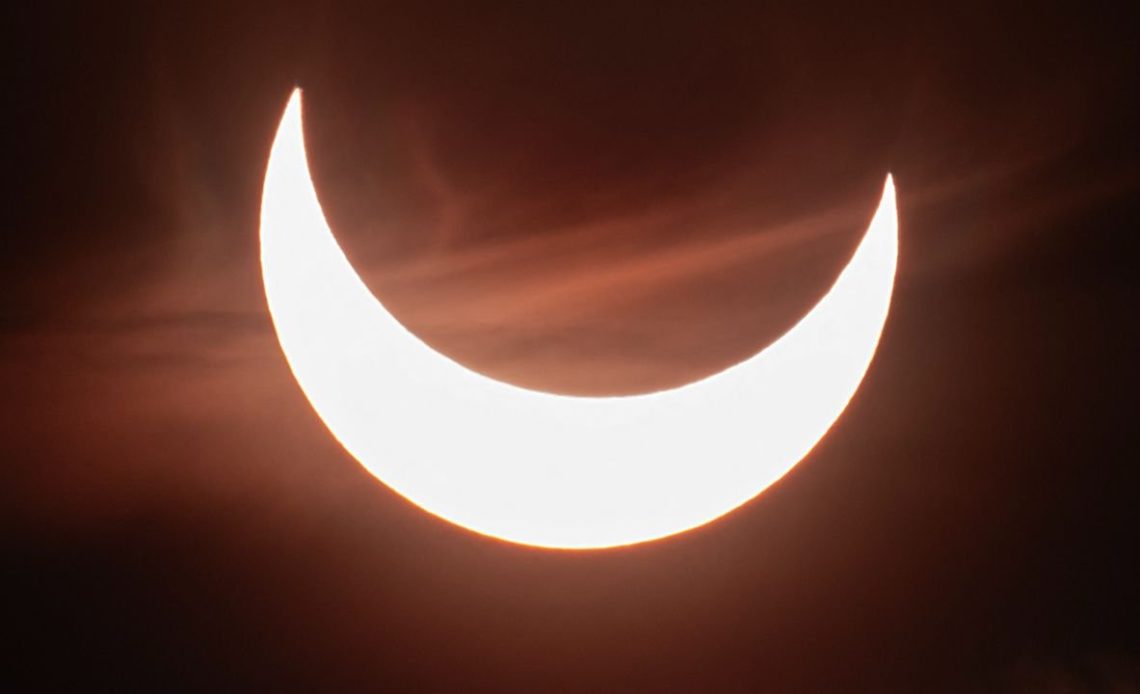
A partial solar eclipse swept across the face of the sun on Sept. 21, mesmerizing stargazers with a dramatic display of orbital mechanics that saw the curved silhouette of the lunar disk turn the incandescent orb of our parent star into a fiery crescent over the Pacific Ocean.
The Sept. 21 partial solar eclipse occurred as the moon traveled between Earth and the sun, blocking the disk of our parent star and darkening the sky for over 16 million people in New Zealand, Antarctica and a host of Pacific island nations.
September’s solar spectacle was captured in exquisite detail by a host of New Zealand photographers, who turned their lenses on the dawn eclipse to capture the partially occulted moon alongside the swirling clouds of the Pacific, along with some colossal ships.
Scroll down to view a selection of the best images of the September 2025 partial lunar eclipse and, while you’re at it, why not read our partial solar eclipse live blog for a blow-by-blow chronological recap of the event as it happened.
The September 2025 solar eclipse in pictures
This magnificent view of the partially occulted sun was caught soon after sunrise by photographer Sanka Vidanagama, who took this image near the city of Christchurch in New Zealand as our star rose above a troublesome bank of early morning clouds. Both the clouds and the ocean below reflect the radiance of our sun, just as the moon took a bit out of its upper left portion not long after first contact.
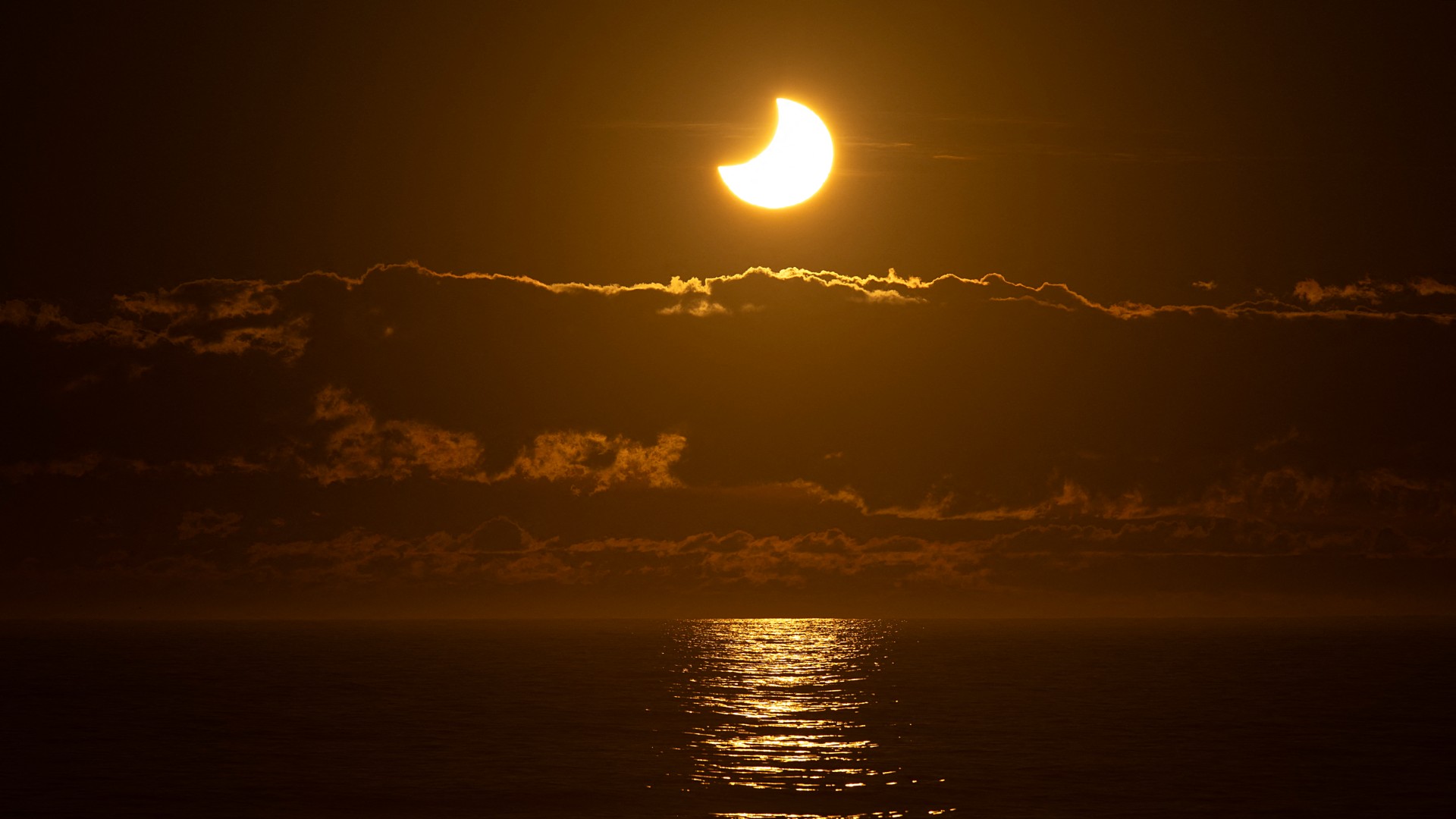
Vidanagama also took a striking image of the partially eclipsed sun shining between two silhouetted observers, as the encroaching lunar disk began to transform the sun into a radiant crescent.
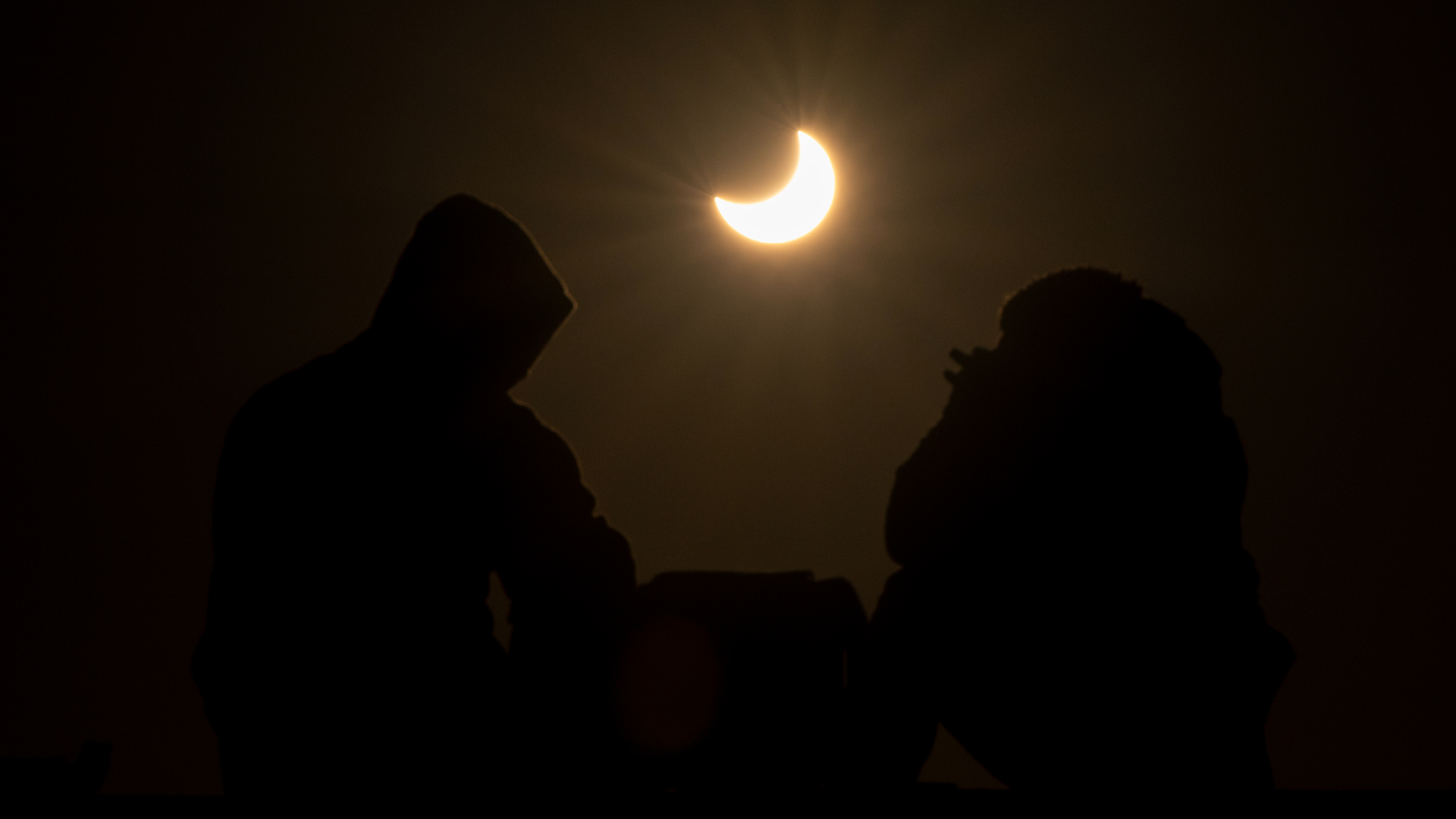
Our next image is a dramatic scene from Kerry Marshall, capturing the partially eclipsed sun wreathed in wave-like clouds it broke through to loom over a pair of gigantic commercial ships in Hawkes Bay, New Zealand.
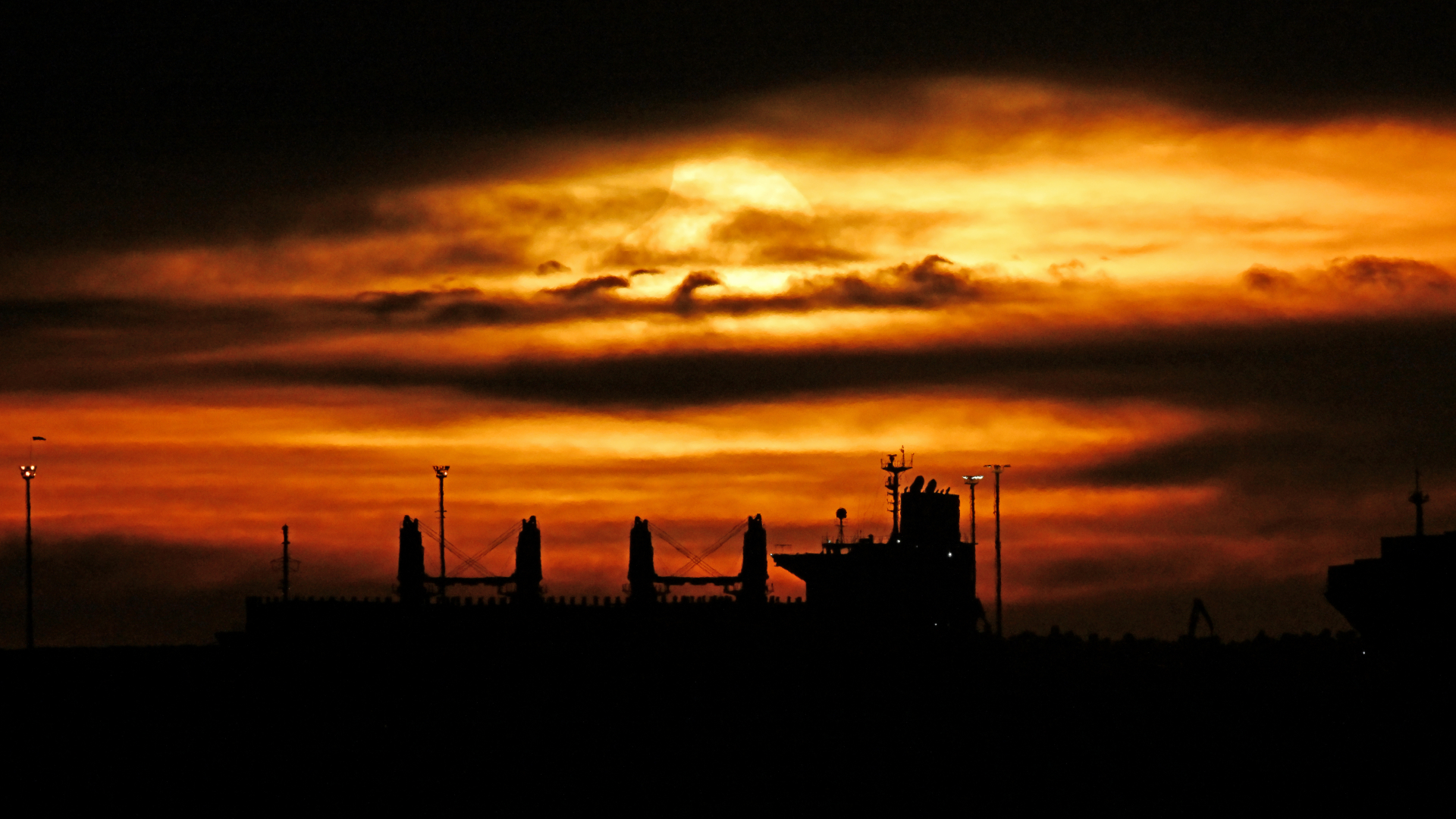
An image of the solar disk seen around the point of the local eclipse maximum in New Zealand, where residents witnessed 60-70% of the sun’s disk hidden by the moon’s curved silhouette, leaving a glowing upturned crescent shining in the morning sky.
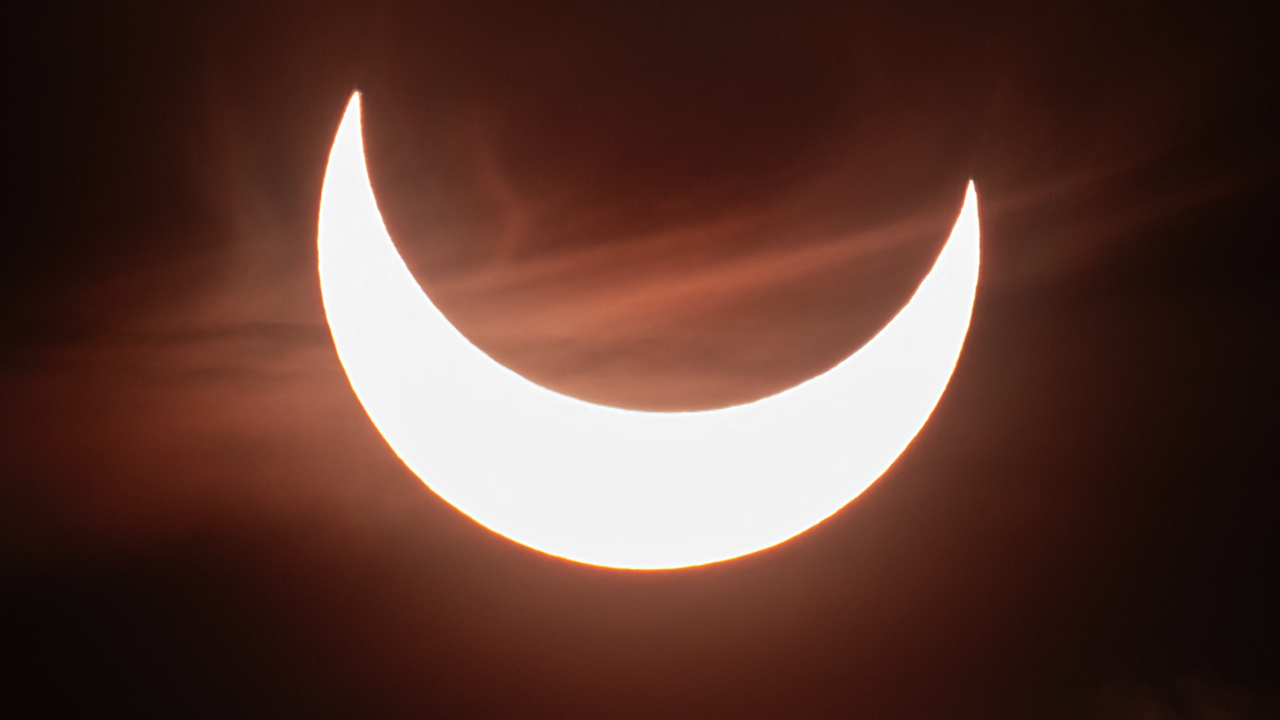
This shot captures the moon as it rolled left to right across the solar disk in the period following the eclipse maximum. New Zealand will witness a total solar eclipse on July 22, 2028, when the path of totality will pass directly over its southern island after passing through central Australia.
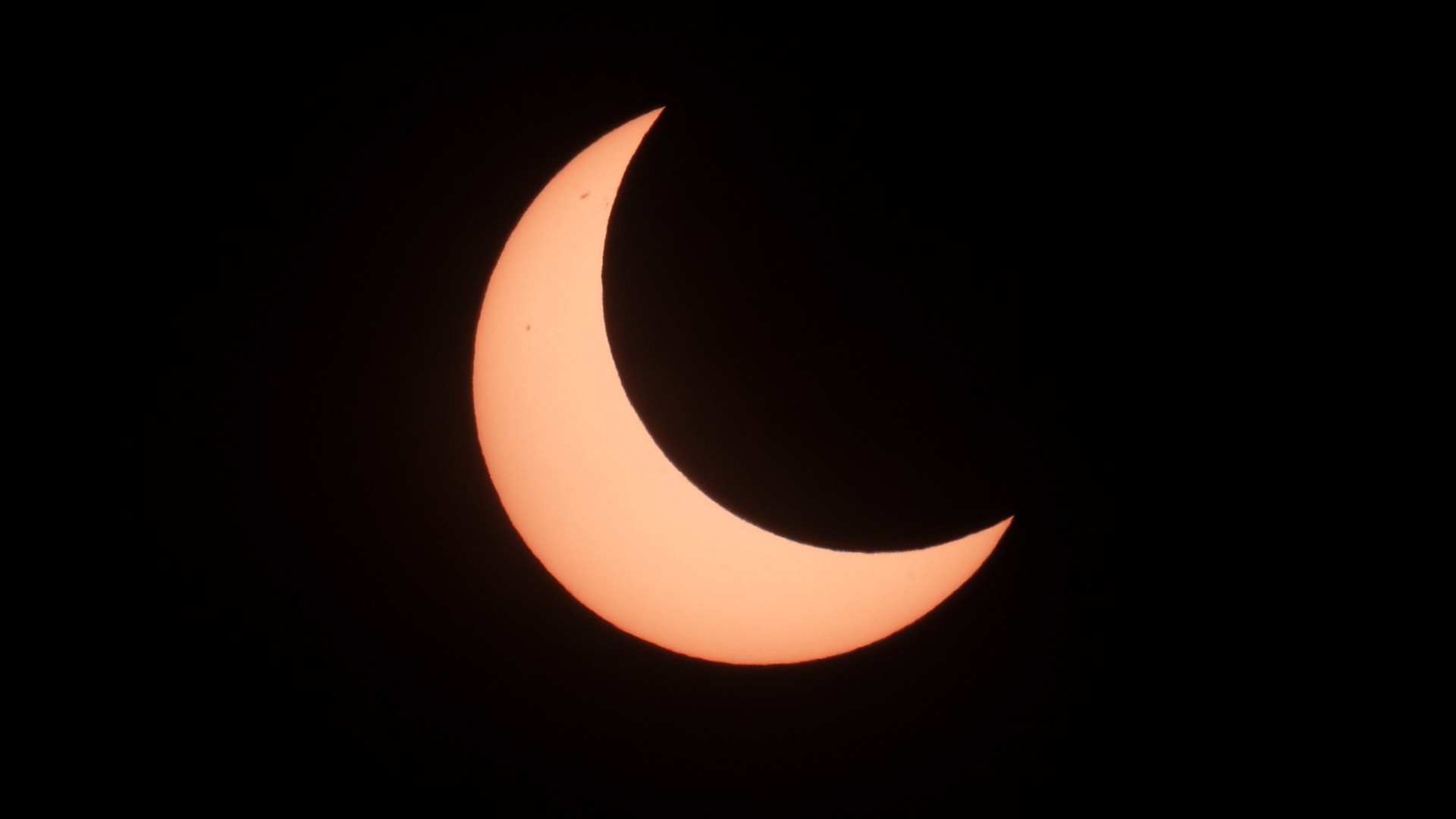
Amateur astronomer Paul Stewart posted a phenomenally detailed image of the sun’s surface to the X social media platform that he captured from South Canterbury, New Zealand, using a specialized Lunt 80 mm telescope fitted with an astrophotography camera. The shot reveals stunning details in the solar atmosphere along with a plethora of sunspots marking the solar “surface”.
Todays partial solar eclipse.Luckily the clouds stayed away until after maximum eclipse.From South Canterbury, New ZealandLunt LS80tha and Grasshopper 3 camera#Eclipse pic.twitter.com/4FXNdXfTVKSeptember 21, 2025
The partial eclipse was also spotted from space by NOAA’s GOES-19 Earth observation satellite, which caught the moon crossing the lunar disk while observing with its Solar Ultraviolet Imager (SUVI), as highlighted by X user Jure Atanackov.
“OMG, mothership UAP captured by NASA space cam eclipsing the Sun!” I have seen this type of stuff posted on more than one occasion. It’s just the Moon photobombing SDOs field of view with a partial solar eclipse yesterday. pic.twitter.com/PjGCwxzptsSeptember 22, 2025
Author: Anthony Wood
Source: Space.com
Reviewed By: Editorial Team



